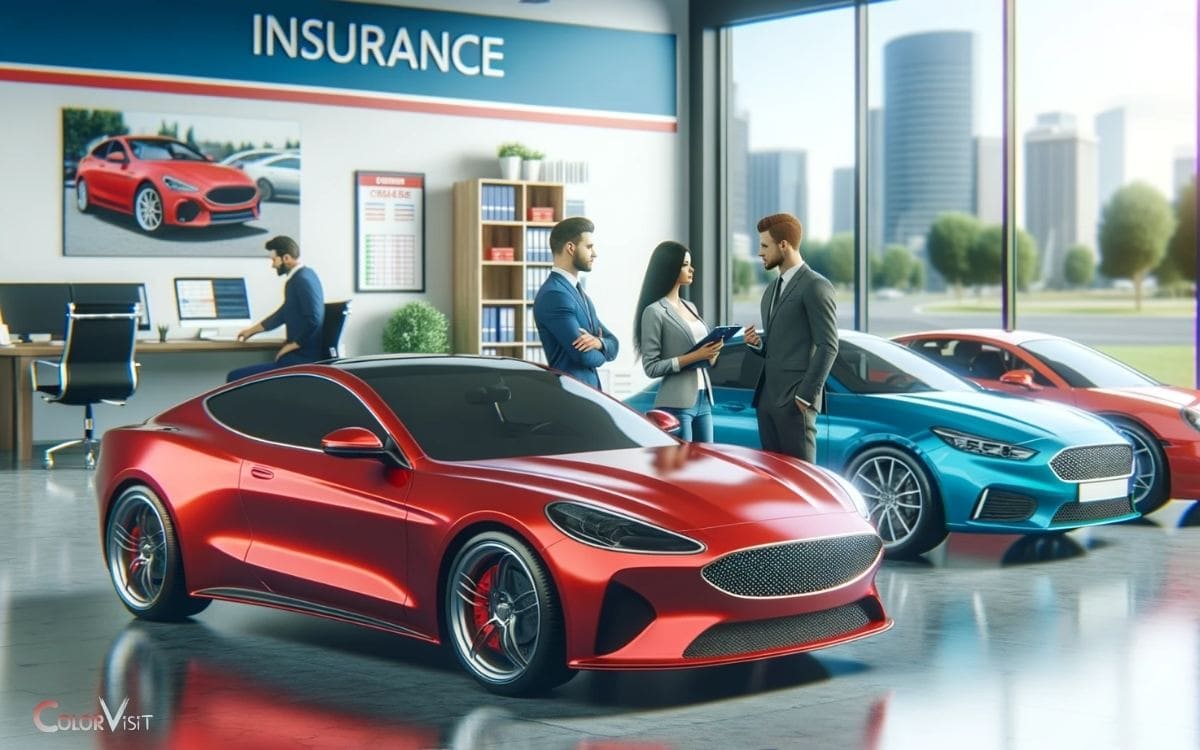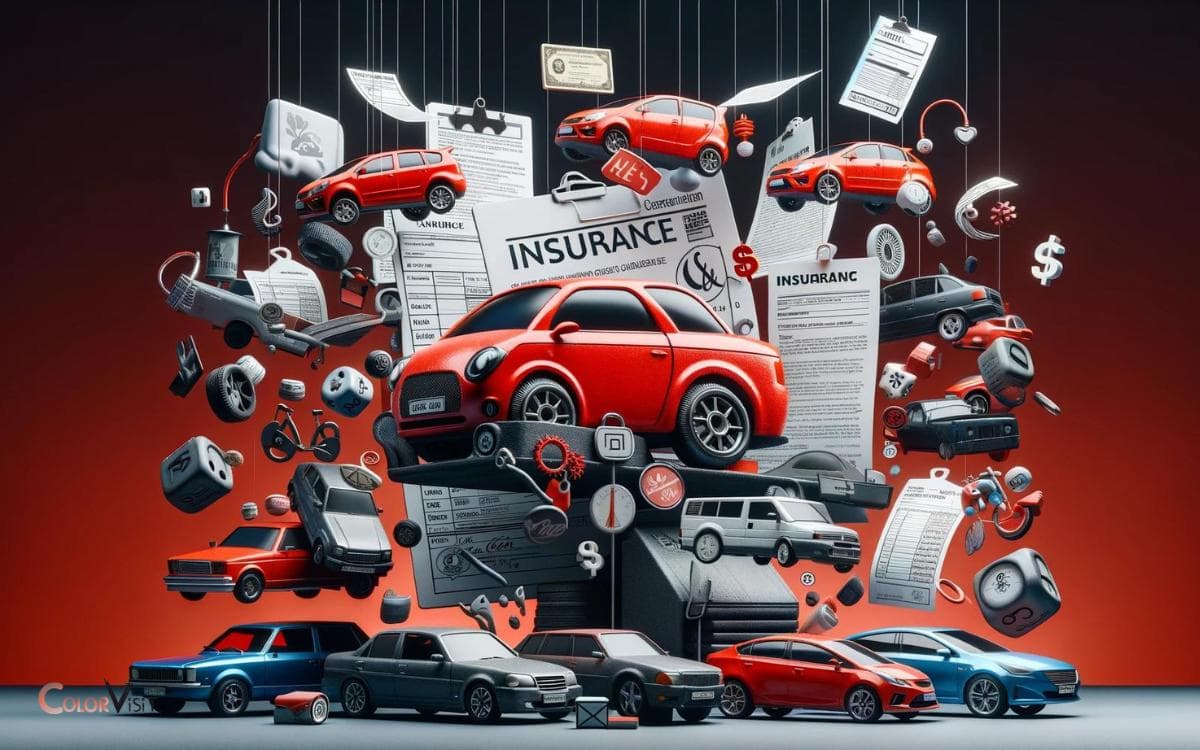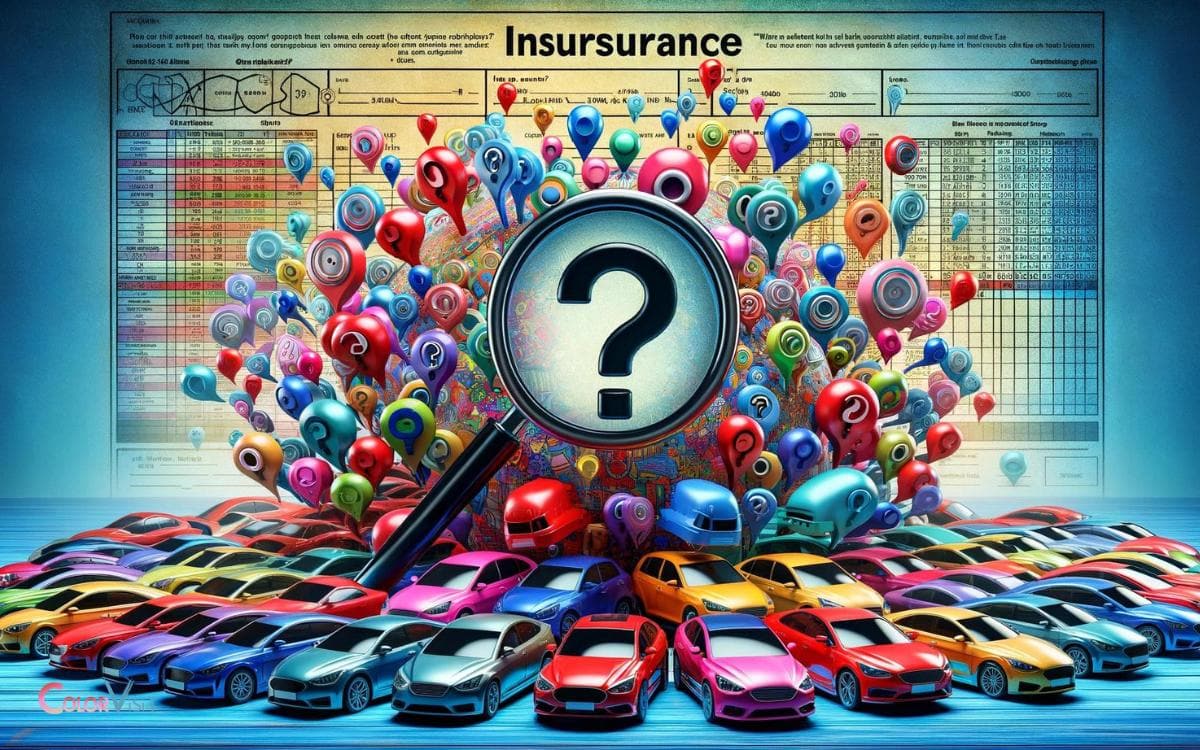Do Red Cars Cost More to Insure Than Other Colors? No!
No, the color of your car, whether red or any other color, does not affect the cost of your car insurance. It’s a myth that red cars cost more to insure.
The misconception that red cars cost more to insure is widely spread, but in reality, insurance companies don’t even ask for the color of your car when determining your insurance premiums.
They are more concerned about factors like the make and model of the car, the age and driving record of the driver, and the area where the car will be driven.
For example, a red sports car might cost more to insure than a blue sedan, but it’s because it’s a sports car, not because it’s red.
The color of your car might impact its visibility or perceived riskiness on the road, but insurance companies base premiums on factual data, not color myths.
Key Takeaway
The Myth of Red Cars and Insurance
The myth of red cars and insurance has persisted despite evidence to the contrary. Contrary to popular belief, the color of your car has no impact on your insurance premiums.
- Insurance companies determine premiums based on a variety of factors such as the driver’s age, driving record, location, and the make and model of the car.
- While red cars may be associated with speeding tickets and a higher risk profile, there is no statistical evidence to support the correlation between red cars and more expensive insurance.
- In fact, the insurance industry is constantly evolving, embracing new technologies and data-driven approaches to assess risk.
It’s important for consumers to stay informed about the latest developments in the insurance sector and not be swayed by outdated myths.
Factors That Affect Car Insurance Premiums
Factors affecting car insurance premiums include the driver’s age, driving record, location, and the make and model of the car, rather than the color of the vehicle. Insurers assess risk based on these factors to determine premiums.
Here’s a breakdown:
| Factor | Impact on Premiums |
|---|---|
| Driver’s Age | Younger drivers often face higher premiums due to less experience. |
| Driving Record | Accidents and traffic violations can increase premiums. |
| Location | Urban areas may have higher rates due to increased traffic and crime. |
| Make and Model | Luxury or high-performance cars typically lead to higher premiums. |
Understanding these factors can help drivers make informed decisions and take proactive steps to lower their insurance costs.
Does Car Color Impact Insurance Rates?
When considering car insurance rates, the color of the vehicle has no impact on the premiums charged by insurers.
- Insurance companies calculate premiums based on various factors such as the driver’s age, driving record, the make and model of the car, its age, and the annual mileage.
- These factors are statistically proven to correlate with the likelihood of accidents or claims, and therefore, influence insurance rates.
- The color of the car, however, does not have any statistical relevance to the risk of accidents or claims.
- Therefore, insurers do not factor in the color of the vehicle when determining insurance premiums.
Understanding this can help consumers make informed decisions when purchasing car insurance and dispel the common misconception that car color affects insurance rates.
Dispelling Common Car Insurance Misconceptions
One common misconception about car insurance is the belief that the color of the vehicle significantly impacts insurance rates.
- In reality, car insurance companies do not factor in the color of the car when determining insurance premiums.
- Instead, they consider more relevant factors such as the make and model of the car, its age, the driver’s age and driving record, the car’s usage, and the location where it will be driven and parked.
- Another misconception is that the minimum coverage is always sufficient.
- However, in the event of a serious accident, minimum coverage may not be enough to cover all the costs, leaving the driver financially vulnerable.
Understanding these misconceptions can empower individuals to make informed decisions and seek the most suitable insurance coverage for their needs.
Understanding the True Cost of Car Insurance
Discussing the true cost of car insurance requires a comprehensive understanding of the various elements that contribute to insurance premiums.
- It’s essential to look beyond the surface and delve into the factors that influence pricing.
- Insurers consider multiple variables such as the driver’s age, driving record, location, the make and model of the vehicle, and even credit score.
- However, advancements in technology are revolutionizing the insurance industry.
- Telematics, for instance, allows for personalized pricing based on individual driving behavior, potentially lowering premiums for safe drivers.
- Additionally, the rise of usage-based insurance offers a pay-per-mile or pay-as-you-drive option, catering to those who drive less frequently.
Understanding these innovative approaches to car insurance can empower individuals to make informed decisions and potentially reduce their insurance costs.
Choosing the Right Car Color for Lower Insurance Costs
Considering the potential impact on insurance premiums, selecting a car color that aligns with lower insurance costs can be a strategic decision for vehicle owners.
By choosing a car color associated with lower insurance premiums, owners can potentially save money in the long run.
Below is a table that showcases the relationship between car color and insurance costs to help you make an informed decision:
| Car Color | Insurance Cost | Emotional Response |
|---|---|---|
| White | Lower | Clean, modern |
| Silver | Lower | Sleek, sophisticated |
| Blue | Moderate | Trustworthy, dependable |
| Red | Higher | Bold, exciting |
| Black | Higher | Powerful, elegant |
Conclusion
The color of a car does not directly impact insurance rates. Instead, insurance premiums are determined by a variety of factors such as the make and model of the car, driving record, location, and coverage options.
It is important for individuals to understand the true cost of car insurance and to make informed decisions when choosing a car color.
By dispelling common misconceptions, individuals can make choices that lead to lower insurance costs.







